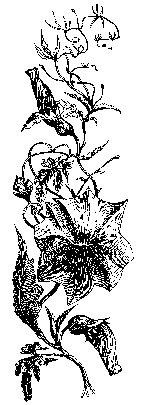


is for Ukrainian Poppy Seed Cake–
Sweet, fragrant, and rich, this cake is a welcome treat any time of day or season. Ukrainian hospitality is a well-known tradition. Also known for borscht and babka, the food of this region is hearty and satisfying.

Ukrainian Poppy Seed Cake
1 cup milk
½ cup poppy seeds
¾ cup butter (1½ sticks)
1 cup brown sugar, packed down
3 eggs
2 cups flour
1 tablespoon baking powder
1 teaspoon baking soda
½ teaspoon salt
1 teaspoon vanilla extract
3 tablespoons fresh lemon juice (about 1 medium lemon)
2 teaspoons lemon rind (about 1 medium lemon)
Preheat oven to 350 degrees and grease an angel food cake (tube) pan. Combine milk and poppy seeds in a small saucepan. Heat to just boiling but do not boil; remove from heat and set aside to cool, about 20 minutes.
While milk and seeds are cooling, cream butter and sugar in a large bowl. Add eggs one at a time, beating well after each addition. Sift together flour, baking powder, baking soda, and salt in a separate bowl. Then add to butter mixture, alternating with the milky seeds, stirring just enough after each addition to blend thoroughly. Finish with the addition of the vanilla, lemon juice, and lemon rind.
Spread batter evenly into prepared pan and bake 40–45 minutes or until done. Do not open the oven to peek or the cake will fall! Cool in pan 10 minutes, loosen sides with a long knife, then invert over a plate and remove pan. Let cool completely before glazing or slicing. The following cooked sauce adds just the right tart-sweet finish.

Lemon Sauce
1 cup boiling water
2 tablespoons cornstarch, dissolved with 2 tablespoons cold water
½ cup sugar
Dash salt
4 teaspoons lemon zest (from about 2 lemons)
2 tablespoons lemon juice (about ½ lemon)
2 tablespoons butter
In a small saucepan of boiling water, whisk in the cornstarch, sugar, salt, lemon zest, and lemon juice. Add butter, whisking constantly and cooking about 5 minutes or until cornstarch is cooked and sauce is thick. Pour over cooled cake.
This would be a wonderful cake to serve on Easter, showcasing other Ukrainian traditions such as an array of vegetable relishes and pickles and of course the intricately decorated pysanky, or Easter egg. See “E is for Eggs,” page 122, to learn more about these symbols of prosperity and rebirth.